Hello! I’m back to blogging!
Today, I bring very exciting news!! I migrated my blog to Deno fully. And now it runs on the EDGE.
Preface
Deno is really a solid choice:
- Deno is much faster than Node in practice (think time to build)
- Deno is no longer a project in it’s infancy
- Amazing community, packages & docs (seriously, everything is documented)
- Deno Deploy
I recommend you watch Ryan Dahl’s talk about his dream stack, which inspired me to migrate my blog to Deno. Ryan is the creator of both Deno and NodeJS. He created Deno to try and fix the mistakes and regrets that have been made in NodeJS. Watch 10 Things I Regret About Node.js by Ryan Dahl, which is his legendary talk about him explaining the mistakes he made with NodeJS.
Plot
I decided to use the deno_blog package as it seems too easy to
work with. It’s also made by the Deno core team. For example, here is the entire
configuration of Ryan Dahl’s blog. It’s just a single Javascript file and the
other files are markdown and a few other static files such as images that all
live in /posts.
import blog, { ga, redirects } from "https://deno.land/x/[email protected]/blog.tsx";
blog({
title: "Ryan Dahl",
author: "Ryan Dahl",
avatar: "./ry.jpg",
avatarClass: "full",
links: [
{ title: "Email", url: "mailto:[email protected]" },
{ title: "GitHub", url: "https://github.com/ry" },
],
background: "#fff",
middlewares: [
ga("UA-91675022-1"),
redirects({
"iocp-links.html": "iocp_links",
"rant.html": "rant",
}),
],
});In the beginning, I built the very same app using a similar configuration but I
soon realised I’m too stubborn and need something more custom. Mainly because I
had integrated too much with marked (which is a library that converts markdown
to HTML) and Deno Blog uses gfm (Github Flavored Markdown). I know it’s bad
(fragmentation instead of contributing new features) but I forked deno_blog
and made downstream changes because I thought this might be overkill comparing
to the KISS nature of everything in Deno. I hence created my fork so
that it can render my site exactly as it was before all while being open to
being extended. Success!
Here is my current script (Notice the different import URL):
/** @jsx h */
import blog, {
h,
highlight,
imageContainer,
} from "https://deno.land/x/[email protected]/blog.tsx";
blog({
author: "Angelo Verlain",
title: "vixalien's blog",
avatar: "favicon/maskable.webp",
avatarClass: "border-none rounded-full",
port: 3001,
dateStyle: "medium",
links: [
{ title: "Email", url: "mailto:[email protected]" },
{ title: "GitHub", url: "https://github.com/vixalien" },
{ title: "Twitter", url: "https://twitter.com/vixalientweets" },
{ title: "Resume.pdf", url: "/Resume.pdf", icon: <IconFile /> },
],
canonicalUrl: Deno.env.get("URL"),
description:
`Hello! I'm Angelo Verlain, but you can call me vixalien. I am a web \
developer. This is my website, a collection of projects and writings.`,
middlewares: [await highlight(), await imageContainer()],
headLinks: [
{
rel: "apple-touch-icon",
sizes: "192x192",
href: "/favicon/android-chrome-192x192.webp",
},
{
rel: "icon",
type: "image/webp",
sizes: "192x192",
href: "/favicon/android-chrome-192x192.webp",
},
{
rel: "icon",
type: "image/webp",
sizes: "512x512",
href: "/favicon/android-chrome-512x512.webp",
},
{ rel: "manifest", href: "/manifest.json" },
{ rel: "shortcut icon", href: "/favicon.ico" },
{ href: "/css/app.css", rel: "stylesheet" },
],
lang: "en-US",
});
function IconFile() {
return (
<svg
width="1em"
height="1em"
stroke-width={2}
stroke="currentColor"
fill="none"
stroke-linecap="round"
stroke-linejoin="round"
viewBox="0 0 24 24"
>
<path d="M0 0h24v24H0z" stroke="none" />
<path d="M14 3v4a1 1 0 001 1h4" />
<path d="M17 21H7a2 2 0 01-2-2V5a2 2 0 012-2h7l5 5v11a2 2 0 01-2 2zM9 9h1M9 13h6M9 17h6" />
</svg>
);
}And all I need to do is run a single commad, then the app is live (INSTANT: NO COMPILATION).
deno run -A mod.txThen to push it to production, I just push to Github, at which point Deno Deploy pushes my script to no less than 30 locations worldwide (the real edge, 👀 Vercel) for free.
The source of my new website is hosted on Github on the deno branch.
Aftermath
Pictures are work 100 words right?
Layout
Before
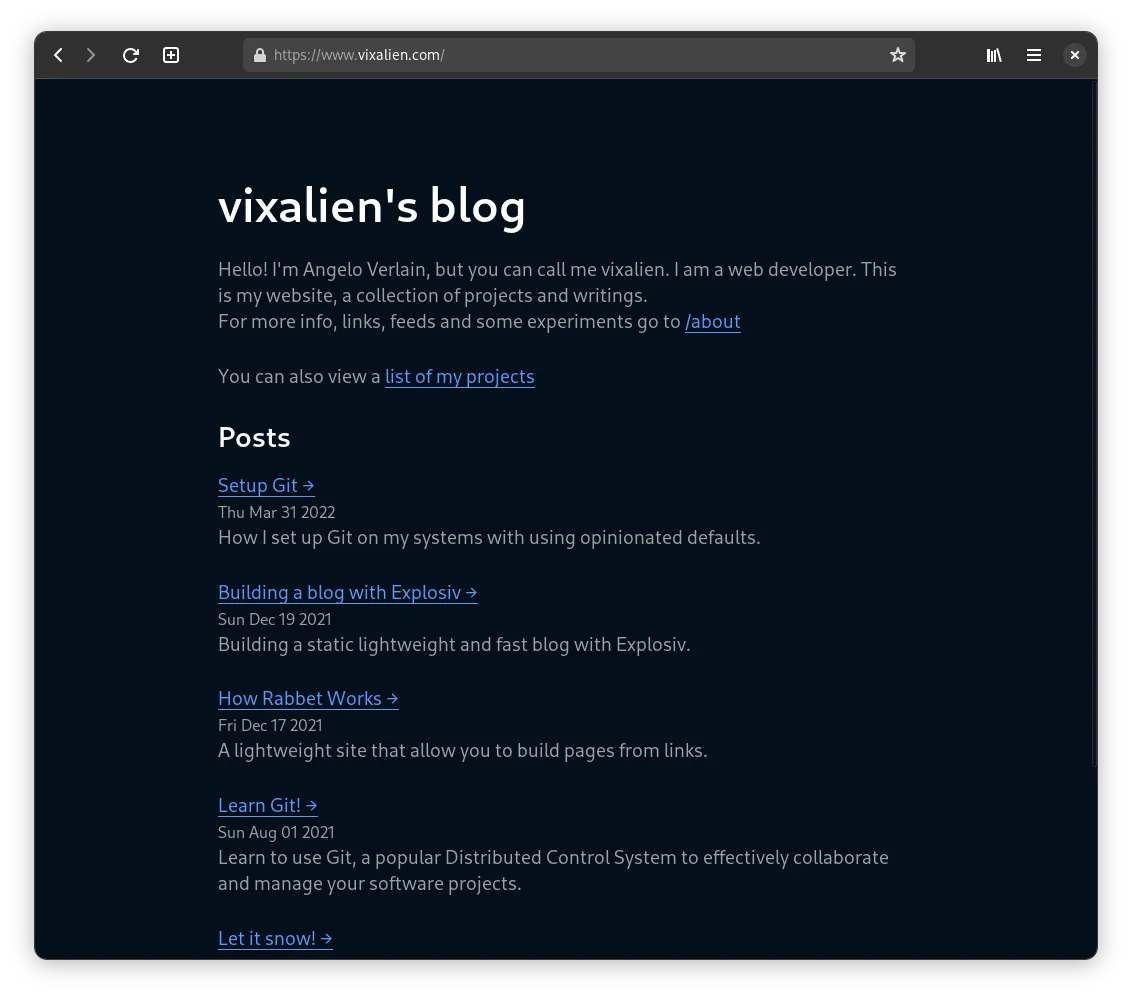
After
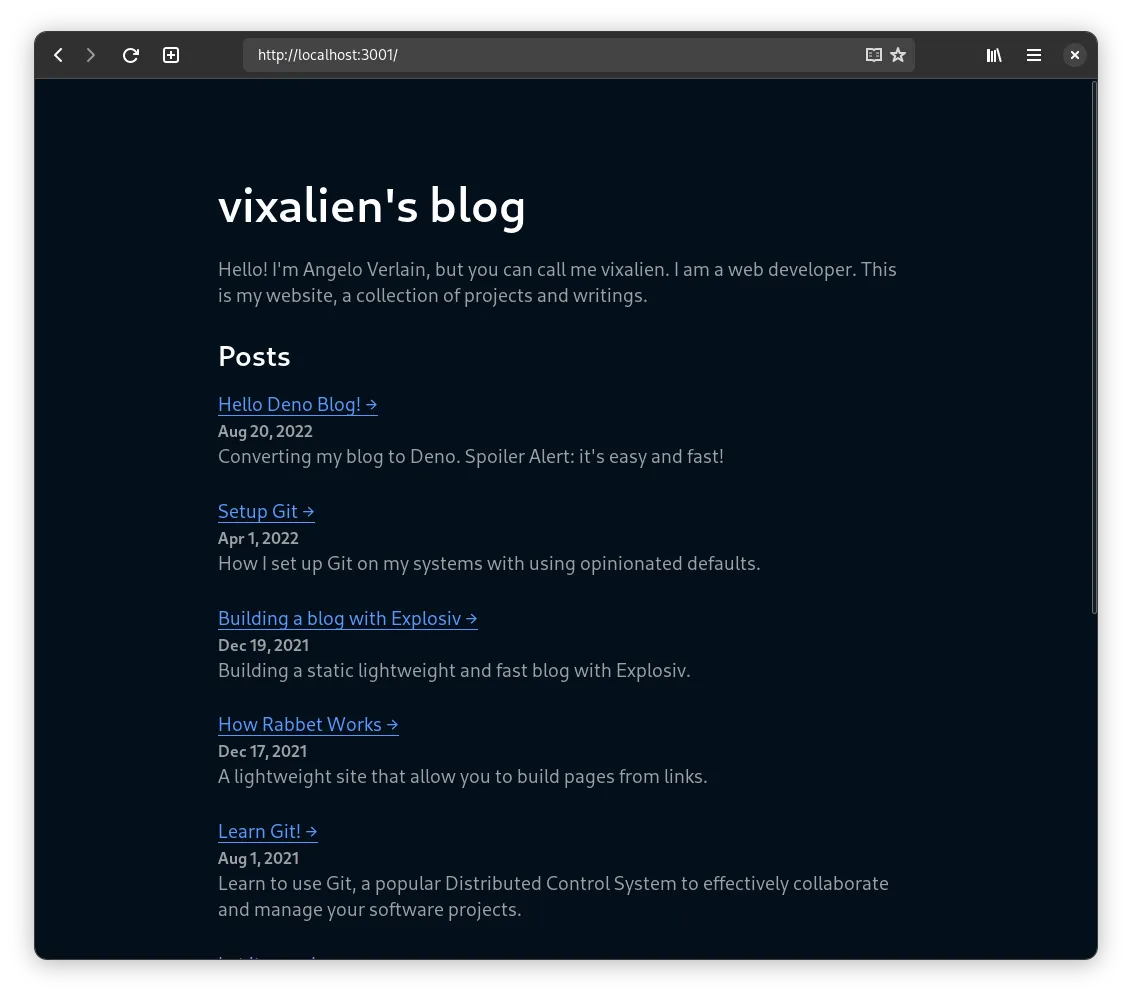
Comment: No visible changes, but under the hood, everything changed.
Total Files
Before
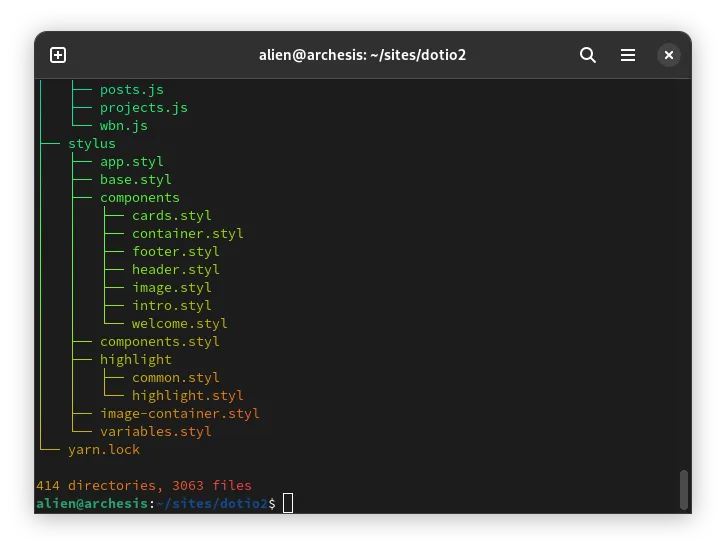
After
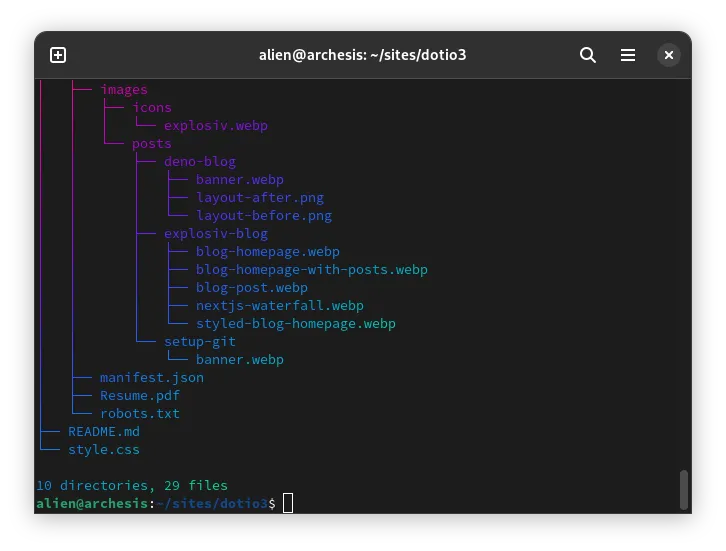
Command:
tree .Comment: Deno uses significantly less files per project as dependencies are stored in central cache (
~/.cache/deno). Node’snode_modulescaused it’s demise.
Disk Usage
Before
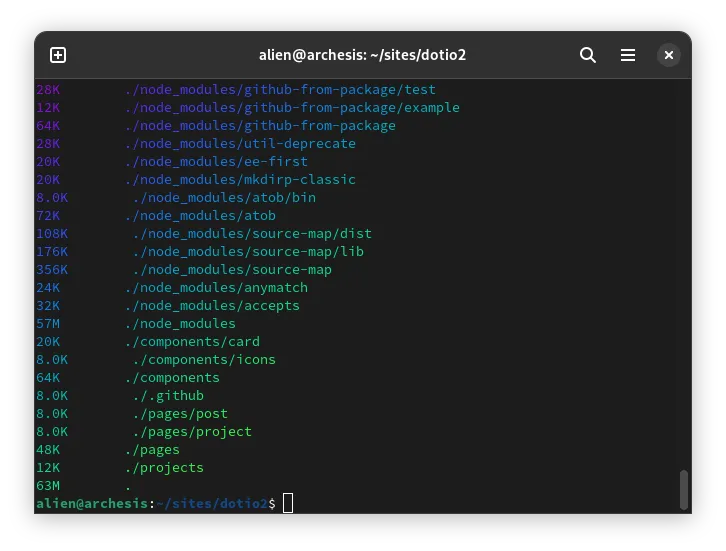
After
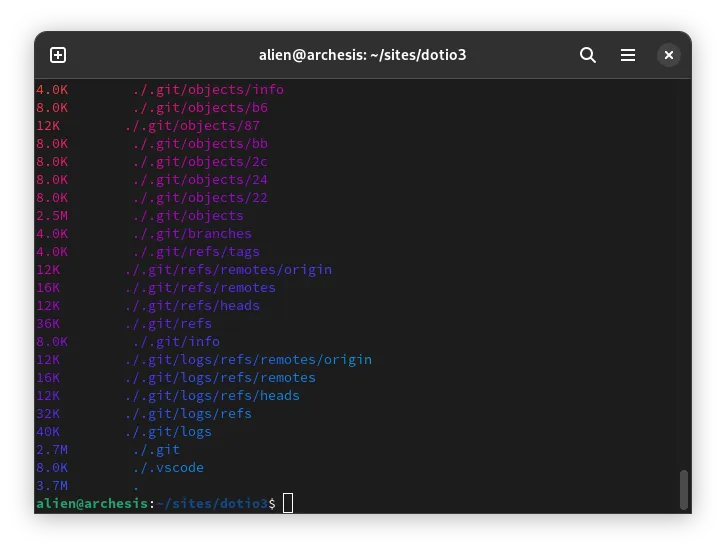
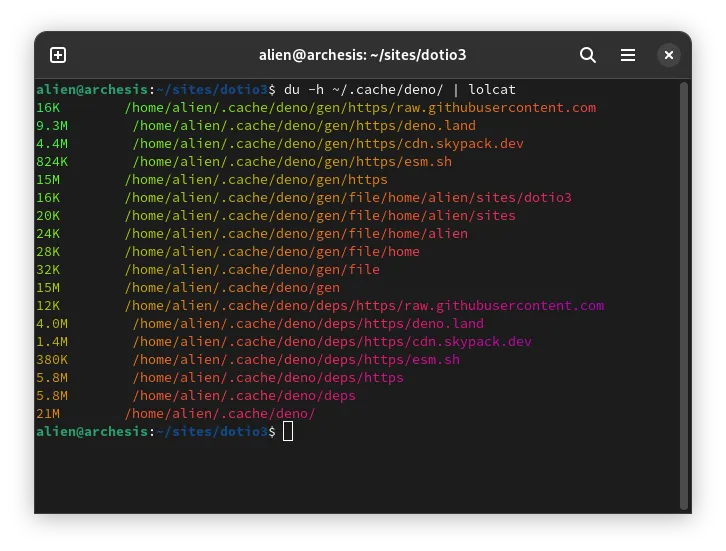
Command:
du -h .Comment: Deno caches every single URL (compressed). If you run an app once, it’s dependencies will be cached for the next time. Cache is stored in a central location so that multiple projects can reuse the cache which is not the case for Node
Performance
Before
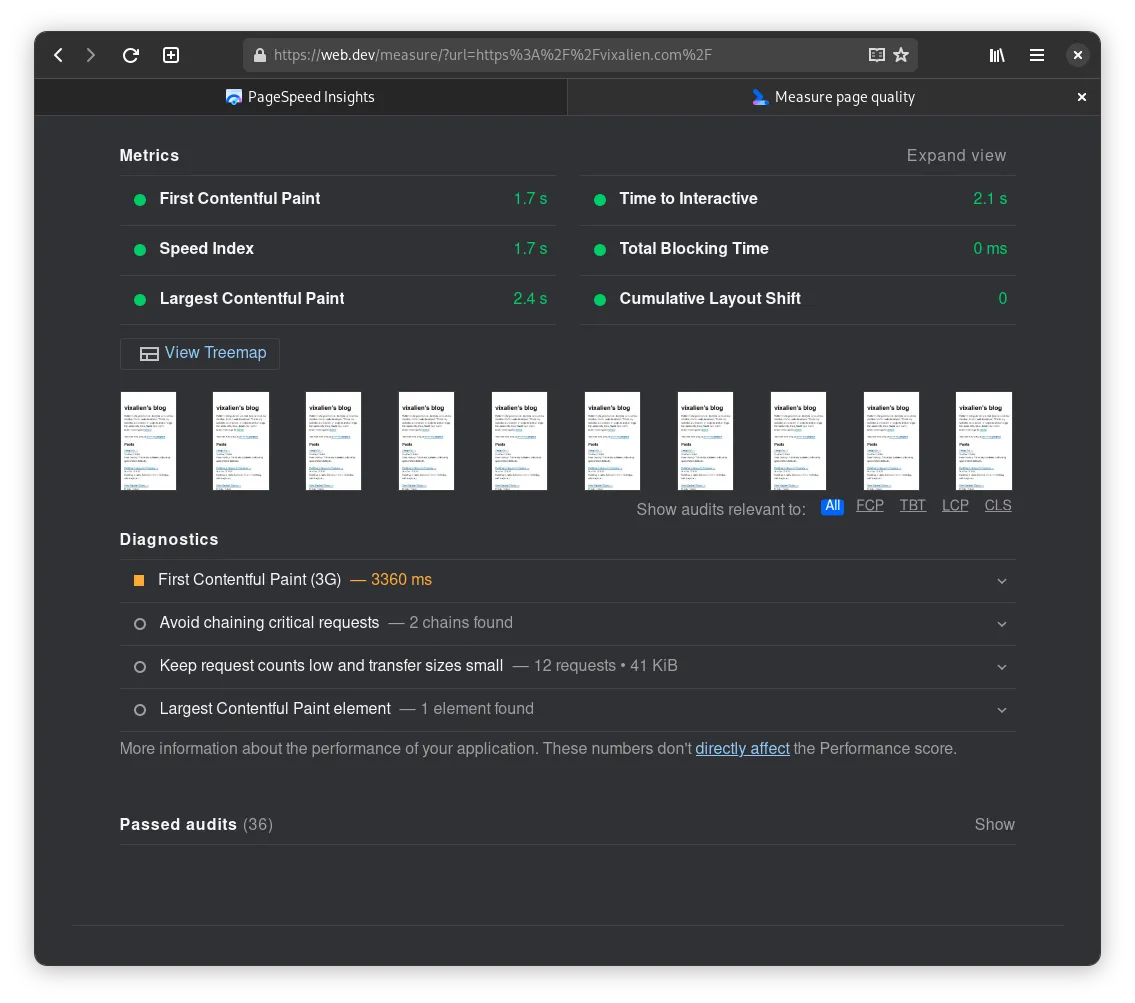
After
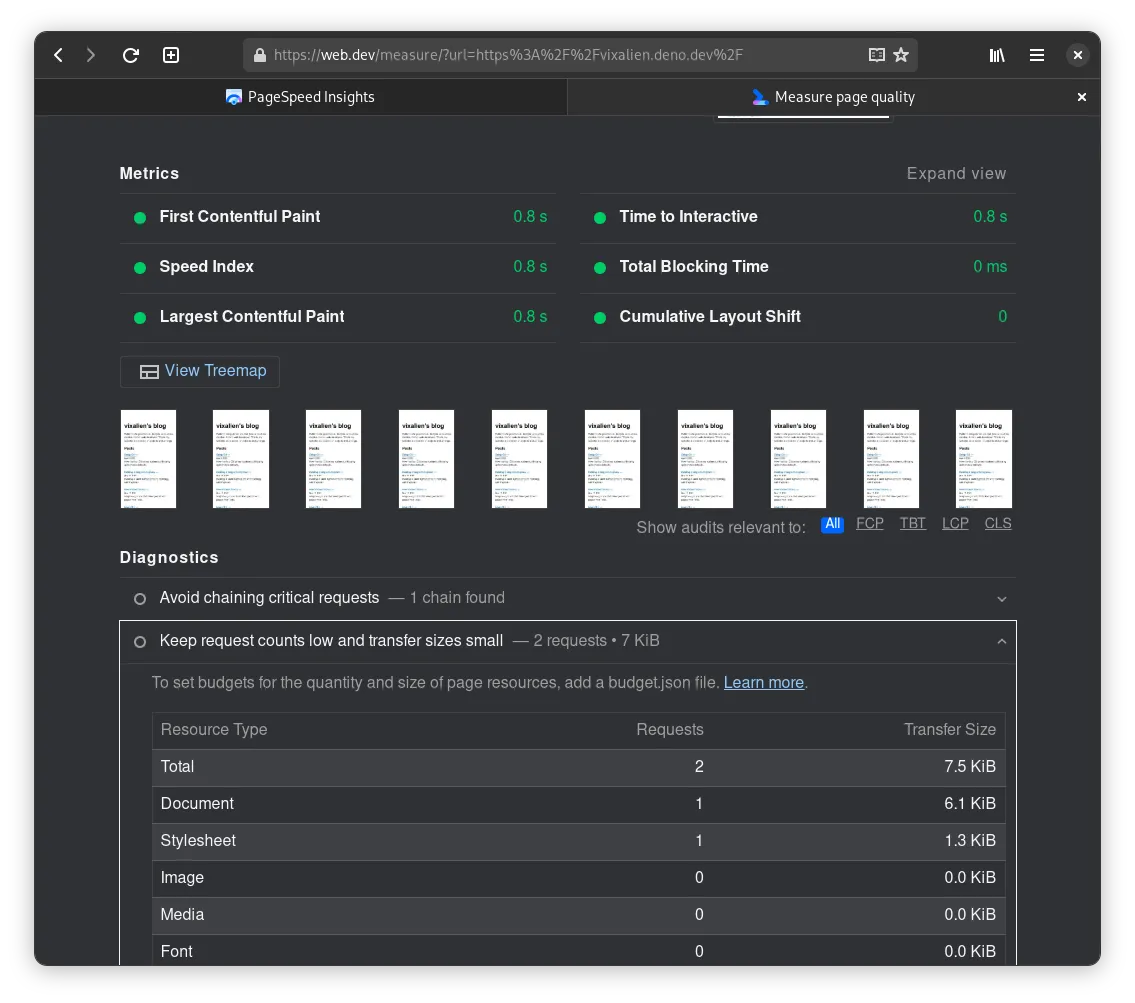
Measured using Lighthouse.
Comment: Deno is almost always 2 times faster because there is good management of code on Deno(on my part) which causes only 2 requests to be served, but nevertheless it’s quite amazing to see Deno win because the app deployed to Vercel is a static app whereas on Deno some actual JS code runs everytime a user hits a route. This is because Deno Deploy pushes to more than 30 locations for free so when you actually request a resource, it’s fetched from the nearest data center unlike Vercel which routes all requests to Washington DC (in the free plan atleast).
Thanks for reading! Have a nice day!
